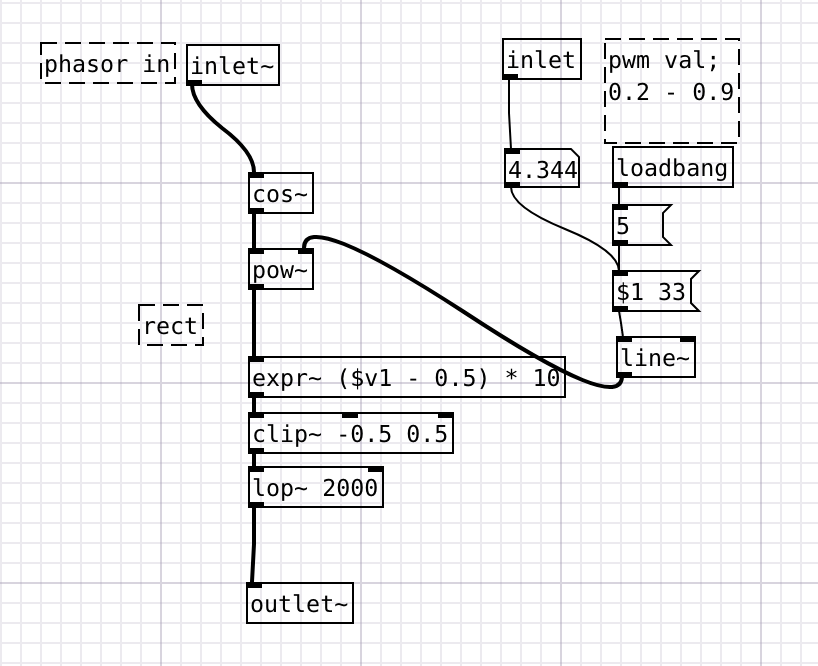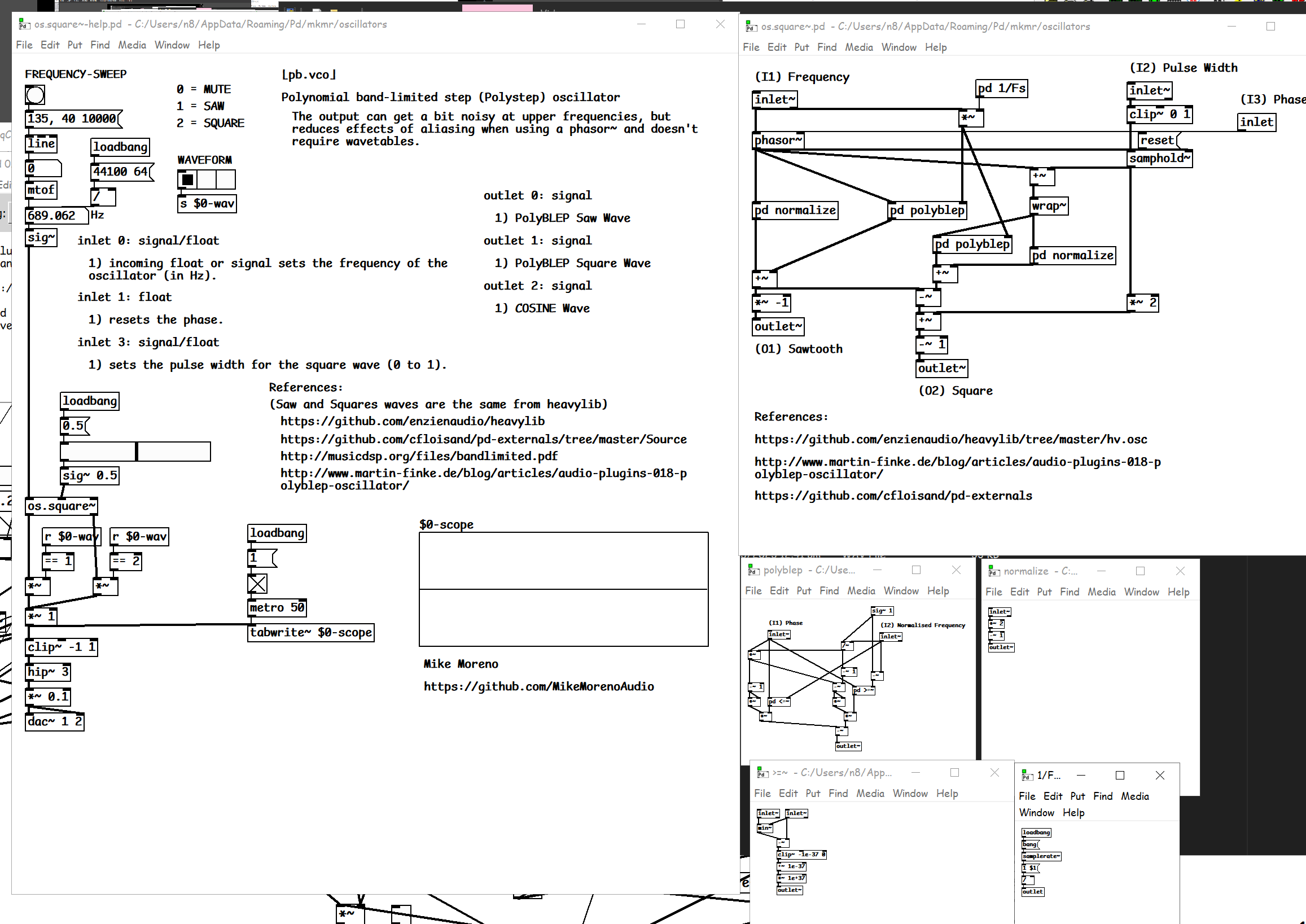@brendanmac lets look at it.

from an electronics perspective it looks like a square wave represents a steady DC signal the closest (meaning if you were to flip the 0 to -1 part it would be a straight line) besides at the crossings and the others look filtered.
Its interesting how there's a subtle difference at the peak of a sine vs a triangle, the sine hits red a little. In vintage analog synths a "dirty" triangle wave could be mislabeled on the synth as tho it is a sine but it looks like it has the least energy. Also from vintage synths if you look at the waves in a scope they look different than you would think, especially something like a 303 (filtering out the DC maybe?). A function generator (which this basically is) is more like what you think of these basic waveforms in your head.
the live electronics tutorial included in [else] is top notch btw (as is the audio section in the help browser, thats supplemented with a free online book on miller's website). a saw has all the harmonics, a square odd, triangle even, and they can be separated or combined. a (co)sine wave is the only signal that can travel through electronics without change phase (which can mess up what you are seeing) one reason why its used to probe inside audio electronics
also to note, the oscope~ on the top was just to show that the [phasor~] normally comes out at 0-1 (normalized float which is easy to use as a looping function) so it has to be stretched out to be used like a sawtooth
testWaves.pd






